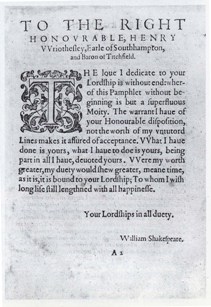Text: Sonnet XX
Task: Textual analysis
OBJECTIVES
Cultural: Learn about different sonnet forms
Intertextual: Single out similarities and dissimilarities between sonnet models
Linguistic: Improve writing skills

Considering the title the reader understands that the sonnet is organized into two quatrains and one - rhyming couplet.
The rhyme scheme is ABAB for the quatrains (painted, passion, acquainted, fashion; rolling, gazeth, controlling, amazeth) while in the couplet there is a rhyming couplet (treasure, pleasure).
The speaking voice says that the object of his passion was first painted with the face of the woman by Nature.
He also means/hints that his love connects male and female beauty in a single individual (the Master Mistress of my passion).
In portraying his fair youth Shakespeare says that he has got the gentle heart of a woman even if his heart is not used to shifting and changing the object of love as women do.
Talking about the fair youth he says that his eyes are more shining that the ones of women. In addition they are less false because they do not roll around so often. His eyes make the object of his look nicer.
Besides the colours of his fair youth control all hues.
As a matter of fact he captures all women's souls and, at the same time, he manages to steal men's eyes.
The speaking voice underlines how at first nature wanted to create him as a woman but since his creation was so beautiful and Nature is a woman herself, she fell in love with her beauty and therefore added something that was without value for a man but guaranteed a woman's pleasure.
The sonnet ends with an invocation on the part of the the poet: he wants to enjoy the spiritual love of the fair youth love and leaves love pleasures to women.
In this sonnet Shakespeare talks about a man that fells in love. In the first and in the second quatrain, Shakespeare describes the object of his love but he doesn't say if it is a man or a woman. He rather describes it by according to the typical conventions of corteous love that is the ones of an "angel women" very common in Italian Dolce Stil Novo poems.
So he says that it has got a gentle heart, a beautiful face and a bright eye. Besides he called the fair Youth the Master Mistress of his passion and says that it steals men's eyes and woman's soul at the same time.
Afterwards, in the third quatrain Shakespeare speaks of the double nature of his love who was first conceived of as a woman but owing to her beauty Nature fell in love with her and so she changed her nature making her a man by a physical addition suitable for women. Finally Shakespeare says that he can love him spiritually.
Besides, the sonnet, is organized in two semantic areas: the one of the body (face, hand, heart, hue, ...) and of the feelings (passion, gently, false bright, gazeth controlling, steal, amazeth, feel a doting, pleasure, love...)
In my opinion the poet wants to describe an ideal kind of beauty, a universal one. In the Renaissance the search for universal beauty was common - after reaching the Ideal Shakespeare wanted to reach a perfect model of beauty.